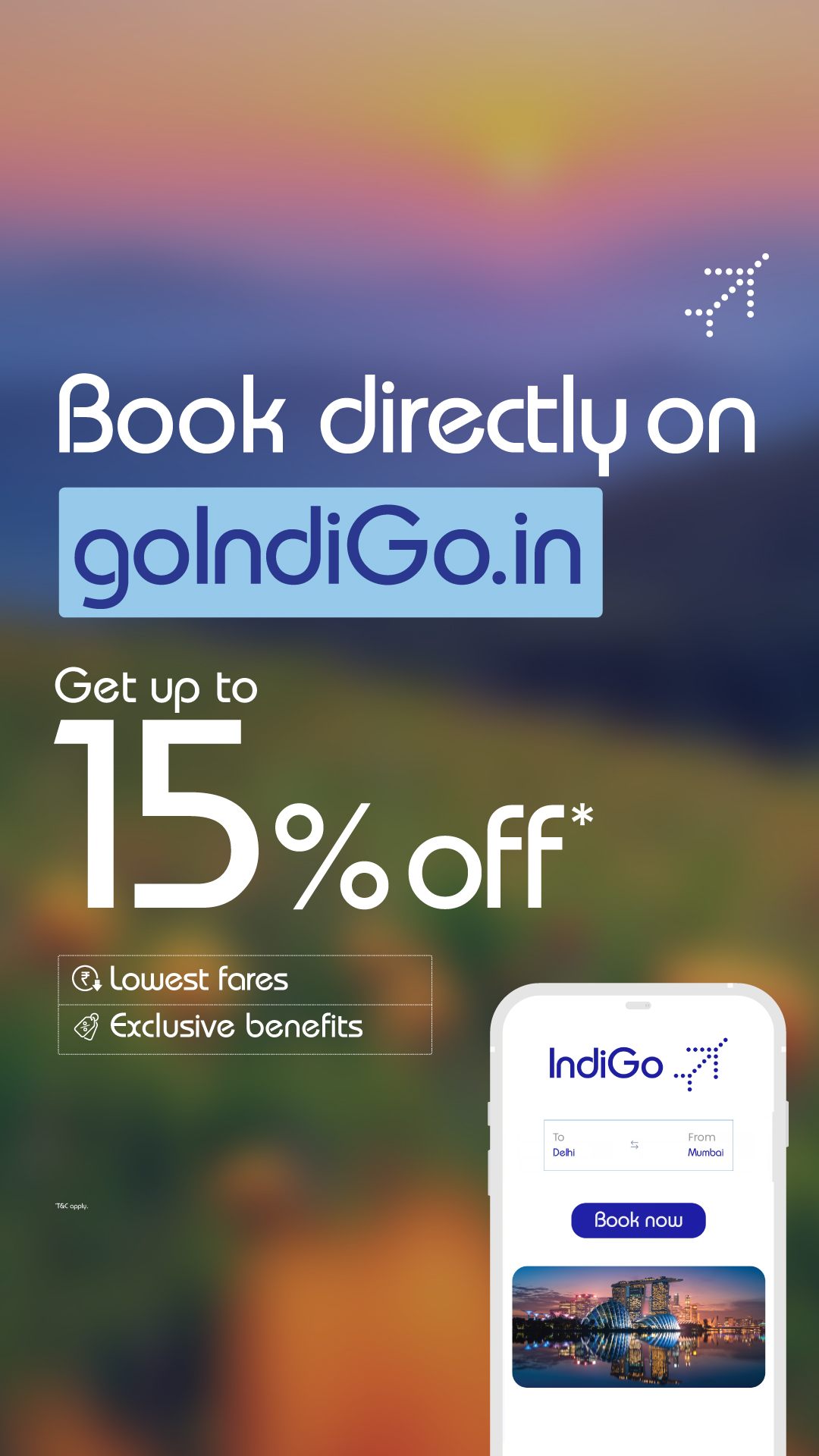Who has never dreamed of going on a safari in Kenya , Tanzania, Mozambique…? Is there an animal lover who hasn’t thought of making a trip to an African country to see its wildlife up close? Observing lions, elephants, rhinoceroses or cheetahs up close is the dream of many people and it was also ours until very recently.
So this year we decided that the time had come to make it a reality and in March we loaded our backpacks on our backs again to go to Kenya (here you can see our travel itinerary to Kenya in 17 days ).
Organizing a safari in Kenya: everything you need to know
How is a safari organized? How much money do I need? It is safe? What are the best options? Where do I begin? There are many questions so let’s go by steps.
With agency or by free? Hire it from home or once there?
The eternal question when organizing a safari is, is it better to do it on your own or with an agency? And if you want to do it organized, is it better to prepare everything from home or look for a company once in the country? Think about these things when deciding:
- The first thing you have to take into account is time , do you have enough days to lose at least a couple of them organizing everything once in the destination? (either to do it on your own or to find an agency in Nairobi) If not, it is better that you have your homework done before boarding the plane. And if you do it on your own, do you have a margin of time in case you lose one moving from one park to another? Remember that public transport may not be as fast, punctual or effective as it can be in your country of origin.
- The second is that, even if you go on your own, inside the parks it will be much easier to find animals with someone who knows the area.
In our case , after much thought and research, we came to the conclusion that it was better to organize everything from home and hire an agency from here. We only had two weeks in Kenya and we wanted a guaranteed safari, so this decision was decisive in saving us from wasting the time we needed in Nairobi looking for agencies, the time we would lose traveling between parks on our own, and the certainty of going with a competent guide. As much as we regret losing freedom.



Which agency to choose?
Once the decision was made to do it with an agency, we started looking for one and more questions arose: would it be local people or would it be a foreign company? Would they be responsible in the parks and with the animals? What would the accommodations be like?
Finally, the company we chose because it was more in line with what we were looking for was Masikio Safaris , a local agency in Nairobi with a Spanish partner (without intermediaries) and with Spanish-speaking guides. We were assigned a very nice guide named Charles who speaks perfect Spanish and was attentive and charming at all times; thanks to him we learned and enjoyed the trip a lot. If you want to contact them you can do it through conmochila and they will surely adjust the price to the maximum. You can organize with them the route, the type of accommodation you want and the days of the safari. Based on what you choose, the price will vary.
On the other hand, what does it mean to do it on your own?
If you do not want to hire an agency and prefer to do the safari on your own, we can only tell you that you will have to move from one park to another by public transport, and once in them you will have to pay the entrance fee , find accommodation and hire the service of a guide/driver to go out to see animals.
All of this is time that is “lost” when one’s days are numbered, as was our case. So for us the decision of whether to do it with an agency or without it depends at the end of the time we have for the trip .
Why Kenya?
Would we do it for free? With much more time and going a second time, possibly.
Another thing that we did not have so clear from the beginning was the destination. Some of you will know that we were asking for advice through social networks because we were considering different options.
To decide the country, the best thing is that first of all you think about what kind of animals you want to see , what activities you would like to do and what landscapes you want to find .
If you want to see gorillas or chimpanzees you will have to go to central Africa, if you want to combine the trip with sightings of marine fauna or diving, rule out the countries without a coast. But if you want to see big cats or elephants, there are a few options.



We considered several and in the end, after ruling out many other destinations, we had to decide between Kenya, Tanzania and South Africa.
Why did we choose Kenya? For 3 reasons:
- The flight was very well priced for us from London (specifically from Stansted, near where we have been living)
- We didn’t need no vaccine
- Because we wanted to know the Masai Mara .
Best time to travel to Kenya
The climate varies from one area of Kenya to another and today, with the effects of climate change, the seasons are no longer as well defined as they used to be. Broadly speaking and in safari areas, time is divided into:
JANUARY to FEBRUARY
good time
The climate is dry and hot. It is high season and it is a good time to go on safari.
MARCH
IT IS NOT RECOMMENDED BUT…
In March the rains begin and it is not usually recommended to go on a safari. However, we did it the first fortnight and it rained only one night. The animals are more spread out at this time, but the great advantage is that there are very few cars and the trip is much more relaxed. We found all the animals that we wanted to see and in the accommodations we were super calm; the last one we were in we shared it only with another couple.
APRIL to MAY-JUNE
IT’S NOT A GOOD TIME
It’s still hot and it’s more humid. This time is known as “long rains”, due to the rains some dirt roads are impassable, so it is not a good time to go on a safari.
JUNE-JULY to OCTOBER
good time
The temperatures are warmer and it does not rain. Good time to go on safari, although it is the one chosen by most travelers.
NOVEMBER to DECEMBER
NOT THE BEST TIME
It is known as the period of the “short rains”, although the temperatures are still warm, it rains again.
Tips and recommendations once in Kenya
What am I going to spend?
Going on safari is not a cheap activity. You have to pay the tickets for all the parks, the accommodations are generally quite expensive and to go on safaris you have to hire guides. In addition, obviously, if you do it through an agency it will be more expensive.
Depending on the luxuries you want to add to the trip, such as the type of accommodation or the number of people with whom you are willing to share the car, the price will be one or the other. We pay for a private safari for 3 people for 8 days / 7 nights 1800$/person. This includes guide/driver, accommodation (all excellent in our case), all transportation from the moment you are picked up at the airport until you say goodbye to the guide, food, water and entrance fees to the parks. The price may be lower if you choose low-cost accommodation and share the car with more people.
The way to do it as cheaply as possible is to organize everything on your own and travel by public transport from one park to another. Once in them you will have to buy the ticket, find accommodation (if you have not booked it online) and hire the service of a guide for the safari. If you have time and you want the trip not to lose part of the adventure, you may be more interested in this option. As we have already indicated at the beginning, at this time it was not our case.
Where I am going to sleep?
The camps are located in the National Parks themselves and normally the cheapest ones are located on the outskirts of these. There are simpler ones and there are very glamorous ones called “glampings”, which are like real hotel rooms but with canvas walls. Some lodges are surrounded by electric fences to prevent wild animals from entering at night, but others do not.
In the Masai Mara we slept in a campsite where there was no protective fence and at night, to move around the campsite, we had to call a Masai armed with his spear to escort us. When we hadn’t met them at any time, the way to call them was by turning the flashlight on and off at the door of the store.
It may sound scary, but the truth is that hearing a roar or the rustle of leaves on the ground next to your tent is really exciting. In addition, during the day some animals such as zebras and giraffes do not cut a hair and walk near your tent. Of course, even if the camp is fenced you will not be saved from baboons or vervet monkeys.
What will I eat? Are there vegetarian options?
Accommodations in National Parks welcome travelers from all over the world, so I guess in order to keep everyone happy, these places always have plenty of food options. In some there is a daily menu and in others there is a buffet, but all the ones we were in had vegetarian options , that was not a problem at any time. In the buffets I always found a couple of trays with vegetables and in the menus, if there was no vegetarian option as such, they invented it and looked for alternatives.
They normally offer three meals a day, the typical breakfast of toast or eggs, lunch and dinner. And of course the famous Tusker beers reach the most hidden corner of the Masai Mara.
Regarding Kenyan cuisine, what we liked the most were the influences of Indian gastronomy, in almost all the dishes you found the flavor of spices or coconut, with rice often being the protagonist.
How to prepare the backpack to go on safari
If it is the first time that you do a safari, surely you wonder what kind of clothes and what other things are you going to need. The answer is: practically the same thing that you would take on any other trip you take, but without forgetting a couple of important things, such as the best camera you have to take photons of animals.
What clothes to wear
Take the most comfortable clothes you have because you think that you are going to spend many hours sitting in the car. Let it be cool too because in the car in the sunnier hours the heat tightens, despite the breeze that enters through the window.
Also keep in mind that it cools down at night so don’t forget something warmer like a sweater, sweatshirt or fleece.
About footwear, comfortable slippers, more than anything in case you do a walking safari and sandals-flip flops to be comfortable in the accommodation.
Recommended plugins
Protect yourself from the sun with sunglasses, a hat and a long-sleeved shirt or t-shirt.
If you want to reduce the use of plastics, do not forget to bring a water bottle, in some accommodation you can fill your bottle with drinking water.
With regard to other gadgets , there will usually be a pair of binoculars per car, but if you want to have your own at all times so you don’t miss a thing, better bring some.
Photographic equipment
Despite the fact that on many occasions you will be very close to the animals, there is nothing better than going with a telephoto lens of at least 200mm to reach the animals that are at a greater distance. It will also help you get close-ups.
The use of a monopod, much more comfortable inside the car, will ensure that your photos do not come out blurry. If the objectives are better stabilized, and more at high focal lengths. And if your camera also has better than better stabilization.
The equipment we used was:
Toni: Fuji X-H1 with Fuji XF 100-400mm f/4.5-5.6 R OIS WR telephoto lens and monopod. With this equipment I took most of the photographs. It is a lens that, despite not being very bright, has a good focus and good definition. The stabilizer, along with the camera stabilizer, worked perfectly. It must be said that I rented the lens only for the safari, since my type of photography is more social than nature, so it is better to “pay per use” than let this lens die of boredom in the backpack…
Carmen: Fuji X-T2 with 16-55 f/2.8 WR. It is the wide-angle zoom lens that Toni usually uses for most photos when we travel, but I took it upon myself to use it together with the small X-T2 that we had half-forgotten in our backpack for landscape photographs, for inside the car, and for when some animal was approaching the car.
Finally, don’t forget to take one or more memory cards, because we warned you that you won’t be able to stop shooting.
National parks and reserves of Kenya
In broad strokes we are going to describe the four national parks or reserves in which we were. Think that each one has its peculiarities, its landscape and its animals, so choose them well depending on what you want to see more of.

01
SAMBURU AND BUFFALO SPRINGS
In central Kenya are Samburu and Buffalo Springs , two reserves separated by the Ewaso Nyiro River , which is typically drier in the early months of the year. The landscape made up of bushes and acacias allows you to see lions, elephants, dick dicks, impalas, leopards, onyx, storks, kudis… being relatively easy to see the species that do not migrate for much of the year. In the river it is easy to see crocodiles and in the tree areas there are dozens of giraffes.

02
LAKE NAKURU
Lake Nakuru has been transformed in recent years due to flooding and inability to drain, with some lodges and the old park entrance being flooded. However, the place is still perfect to see white rhinos (some black if you are lucky), flamingos by the hundreds and the omnipresent baboons. You can take a walk along the shore of the lake, always in the company of the guides and, of course, under the watchful eye of the buffalo…

03
LAKE NAIVASHA
Lake Naivasha is the ideal place to see hippos. Taking a boat ride in the morning, it is more than likely that you will find dozens of them resting in some corner of the lake and they are so still that you may confuse them with rocks. The boat rides reach Crescent Island, a true collection of fauna where you can see zebras, giraffes, impalas by the handful, the place where scenes from Out of Africa were filmed. The walk is relaxing and at the same time spectacular.

04
MASAI MARA
The popular Masai Mara , located in southern Kenya, is an extension of the Serengeti , which belongs to the neighboring country of Tanzania. It is called that because it is inhabited by the Maasai and the Mara River that runs through the area and is so well known for the amount of wildlife that lives with the tribe of warriors. How many documentaries have been shot in this part of the planet? It is not surprising considering what the big five of the Masai Mara are: the lion, the leopard, the elephant, the black rhinoceros and the buffalo.
Animals in Kenya
I am sure that the reason you have decided to visit Kenya is its animals. However, love or respect for animals is not always linked to proper treatment, often due to lack of information. You have to learn to admire wildlife from a distance and without getting in the way.
In Kenya there are many recovery centers and you may have decided to complete your trip by visiting one. Find out before going to any center and remember that a place that works for animals is not the same as one that allows them to pose for tourists to decorate their instagram… As far as wildlife is concerned, animal welfare is inversely proportional to the contact they have with tourists.

01
WILD FAUNA
Before going to see animals, you have to understand that interfering with their routines can have catastrophic effects, so the goal is for our presence to go as unnoticed as possible. Animals have become accustomed to the presence of cars in parks and do not feel threatened, so they act as if we were not there, even so we must avoid being scandalous. In addition, distances must be respected, not leaving the marked paths so as not to destroy their habitat and, above all, not interacting with the fauna in any way. In no case feeding wild animals is going to benefit them, and that includes all types of monkeys that come to your store.

02
COLOBUS CONSERVATION
On Diani beach in Mombasa is the Colobus conservation , a rehabilitation center for Colobus and other primates. Habitat loss and illegal hunting are the greatest threat to many primates that, with the intention of surviving, approach urbanized areas with the dangers that this entails, such as approaching roads. This center tries to create awareness, educates the population and tourists and rehabilitates some specimens. Remember that it is not a zoo, so if there are no animals at the time of your visit, be glad that no ehemplr needs to be rehabilitated and simply take the opportunity to learn from the volunteer who accompanies you to visit the center.

03
SHELDRICK WILDLIFE TRUST
I was very hesitant about visiting this center because of my experience with Asian elephants . Fortunately, however, the Sheldrik Wildlife Trust has little to do with Thai sanctuaries, and the intentions of this center are clearer. Firstly, because most of the visit consists of hearing about the purpose of the center and the history of the orphaned baby elephants and rhinoceroses that unfortunately have found their way there. Once again, illegal hunting and habitat loss are the great enemy of these animals. Fortunately, the DST is responsible for rehabilitating these animals and after a long process that lasts years, returning them to their habitat.
Recommended documentaries
Here is a list of documentaries related to Kenya, its animals and part of its culture. If you know any more, do not hesitate to write it in comments:
- The “Game of Thrones” of the animal kingdom. The BBC’s Dynasties has five episodes that closely follow the struggle for survival of five different species. The one with the lions is shot in Kenya.
- Big Cat Diary follows the daily lives of a pride of lions, a family of cheetahs and a family of leopards in the Masai Mara. Nothing new, but it’s a BBC classic.
- The Mara River and the life around it are the protagonists of this documentary. Line of Fire Mara River can be found on youtube, although the image quality is not the best, it is interesting.
- Watching these documentaries my love for elephants was born. Elephant diaries follows the lives of a group of orphaned elephants, rescued by the David Sheldrick Wildlife Trust.
- Do yourself a favor and listen to it in English, even if you have to put subtitles. After watching Our Planet episodes and listening to Sir David Attenborough’s gripping narrative, you’ll want to visit many other places on the planet, not just Kenya.
- The Secret Life of Elephants is a miniseries following the lives of elephants and the work of Save the Elephants (founded by Iain Douglas-Hamilton ), in the Samburu National Reserve.
- “Hyenas have a reputation for being thieves, cowards and scavengers; they are actually very intelligent and efficient predators.” Bad fame has always haunted her, but in this documentary she is the protagonist. Is the hyena the queen of the Masai Mara ?




















































